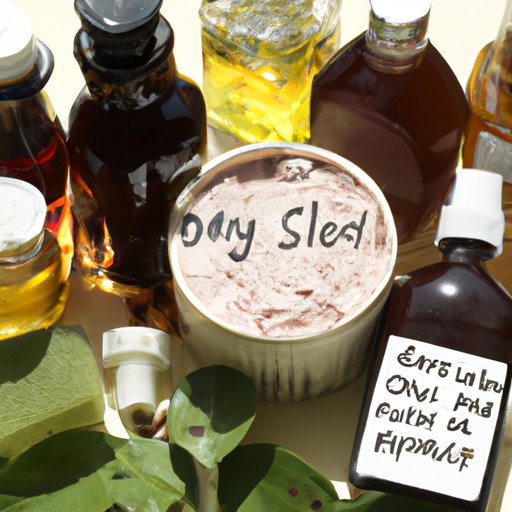Introduction
Poison ivy is a plant that can cause a red, itchy, and sometimes painful rash when touched. It grows in most parts of North America and is usually found in wooded areas or near fences. The sap of the plant, called urushiol oil, contains an allergen that can cause a severe reaction in some people. Understanding the causes, symptoms, and treatment options for poison ivy can help people take steps to avoid contact with the plant and treat any reactions if they occur.
How Long Does It Take to Get Poison Ivy?
The onset of a poison ivy reaction can vary greatly depending on a number of factors. In general, the reaction will begin within one to three days after exposure to the plant. However, some people may experience a reaction sooner, while others may not experience symptoms until up to two weeks after contact with the plant. The severity of the reaction also varies from person to person and may range from a mild rash to severe swelling and blistering.

Risk Factors for Poison Ivy
Certain factors can increase the risk of experiencing a severe reaction to poison ivy. Age is a major factor, as young children and elderly individuals may be more likely to have a severe reaction than those in their teens and twenties. People who are frequently exposed to outdoor environments, such as hikers and gardeners, may also be more prone to a reaction. Finally, people who are sensitive to urushiol oil may be more likely to have a severe reaction.

Prevention Tips for Avoiding Poison Ivy
The best way to prevent a reaction to poison ivy is to avoid contact with the plant altogether. Wearing protective clothing, such as long pants and sleeves, when outdoors can help reduce the risk of exposure. Staying away from wooded areas and avoiding contact with any plants that may look similar to poison ivy is also important. Finally, it’s important to clean up thoroughly after any outdoor activities to ensure that any urushiol oil that may have been tracked indoors is removed.

When to Seek Medical Attention for Poison Ivy
In most cases, a reaction to poison ivy can be treated at home with over-the-counter medications and natural remedies. However, there are certain signs that warrant medical attention. If the rash covers a large area of the body, is accompanied by severe swelling, or appears to be infected, then it’s important to seek medical care. Additionally, if the rash is accompanied by difficulty breathing or other signs of a severe allergic reaction, then emergency medical attention should be sought.
Natural Treatments for Poison Ivy
There are several natural remedies that can be used to relieve the itching and discomfort associated with a poison ivy rash. Taking an oatmeal bath, applying cold compresses, or applying aloe vera gel to the affected area can help soothe the skin and reduce inflammation. Additionally, drinking plenty of water and taking an antihistamine can help reduce the severity of the reaction.
Home Remedies for Poison Ivy Relief
In addition to the natural remedies mentioned above, there are several home remedies that can provide relief from the itching and discomfort associated with a poison ivy rash. Applying apple cider vinegar to the affected area can help reduce inflammation and itching. Calamine lotion and baking soda can also be applied to the skin to help soothe the itching and dry out the rash. Additionally, using hydrocortisone cream can help reduce the severity of the reaction.
Conclusion
Poison ivy is a plant that can cause an itchy and painful rash when touched. The onset of the reaction can vary from one to two weeks, depending on a variety of factors. To prevent a reaction, it’s important to wear protective clothing, avoid contact with plants, and clean up thoroughly after outdoor activities. If a reaction occurs, natural treatments such as oatmeal baths, cold compresses, and aloe vera can help provide relief. Additionally, home remedies such as apple cider vinegar, calamine lotion, and baking soda can also help reduce the itching and discomfort associated with a poison ivy rash.
(Note: Is this article not meeting your expectations? Do you have knowledge or insights to share? Unlock new opportunities and expand your reach by joining our authors team. Click Registration to join us and share your expertise with our readers.)
